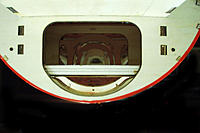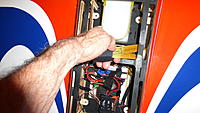Posted by flipsideflyer |
07-05-2018 @ 05:52 PM | 21,339 Views
Like many other R/C airplane designs on the market today, this particular model was only available for a short period of time. That’s unfortunate. This plane makes an excellent platform for the venerable, old-but- reliable Zenoah G-62. Having a couple of G-62’s sitting around with nothing to do, I randomly picked the Hangar 9 Inverza 62 for one of my building (assembly?) projects. As of this writing, I’ve logged nearly thirty flights and couldn’t be happier. In fact, it’s one of the sweetest flying giant scale planes I have yet to fly. It’ll climb vertical with ease; handles all the maneuvers that I know how to throw at it and it lands and takes off like a trainer. An added bonus is that its flight characteristics, both upright and inverted, are nearly identical. As I said, it’s truly a sweet flying airplane!
Here is a summary of the modifications I made to accommodate the G-62 engine and to allow me to continue flying from sod and/or unimproved runways.
1. Removed 1 ½ inches from the front of the motor box. First, however, I transferred the original equipment manufacturer (OEM) engine thrust lines from the kit-installed firewall to the outside of the motor box before actually shortening the box. These lines served as a reference for the new firewall installed later. I used a box-cutter to remove the 1 ½ inches from the nose of the box...yeah, it’s soft ply!
2. Cut and installed eight (8) small, triangular pieces of ply to fill in the structure on both the left and right sides of the motor box. Then added a 1/8” sheet of ply over the top of them in order to beef up the sides of the motor box. I then installed a 3/8” ply firewall, adjusted to match the original thrust line, added hardwood triangular stock to all the stress points, pinned and fiber glassed the firewall at the side rails and fuel proofed the section of the fuselage, motor box, etc.
3. Because I don’t run a tuned exhaust, I have no need for the “tunnel style” landing gear. Instead; I can benefit from a stronger gear-mounting platform. TNT manufactures a “flat style” gear that serves as a perfect replacement. To beef up the mounting, I installed a 3/8” ply platform on top of the OEM aluminum rails. The ply platform runs from side to side and from the front bulkhead to the second bulkhead. In order to install the new platform, it was necessary to first split it down the middle (using a squiggly cut) and notching the sides to clear the OEM hardware. I epoxy-glued the entire platform in place, including along the squiggly center cut.
4. Once the epoxy glue had set, I installed a rectangular piece of 1/8” ply to fill the gap between the aluminum rails on the bottom of the platform, again using epoxy glue. I then used foil-backed duct tape to cover the entire gear area...including the small openings and running across the entire platform under the landing gear. Then I drilled the necessary holes and bolted on the TNT gear.
I’m using high-voltage electronics for all except the engine ignition....JR8911HV for surfaces; JR8711HV for throttle and JR RS1222 RCVR. The engine ignition utilizes a 4.8 NiMH 2200 mAh battery while the rest of the equipment utilizes a pair of 2S 2200 mAh LiPo batteries. Once the airplane was fully assembled and with the ignition battery located inside the motor box, I used the LiPo batteries to finalize the CG. In my case the LiPo battery location was ~1 inch behind the spar tube. With the batteries in these locations, NO (as in “zero”) additional weight was needed to obtain the perfect CG. Weight with batteries and no fuel is 18 lbs.
The final touch was adding a nylon “carry strap” around the spar tube to facilitate loading and unloading from my van. I leave the strap in place when flying as it’s in a location that doesn’t interfere with anything inside.
Several miscellaneous tips:
a) Elevator servos: use a long (20mm X 3mm) screw in place of control arm screw to hold servo in place while installing.
b) Rudder: install the control horn BEFORE putting the rudder on the plane. Also, make a decision on tail wheel steering and install any needed hardware BEFORE installing the rudder. Oil the rudder hinges to prevent epoxy from entering and jamming the hinges following rudder installation.[/FONT]




